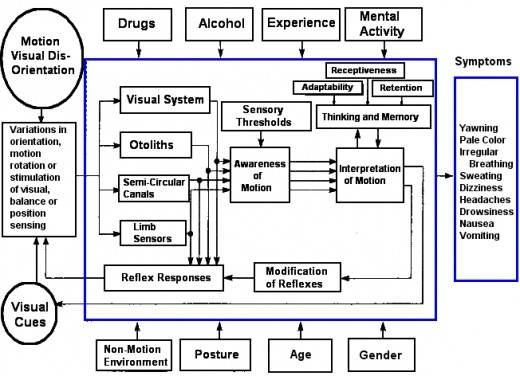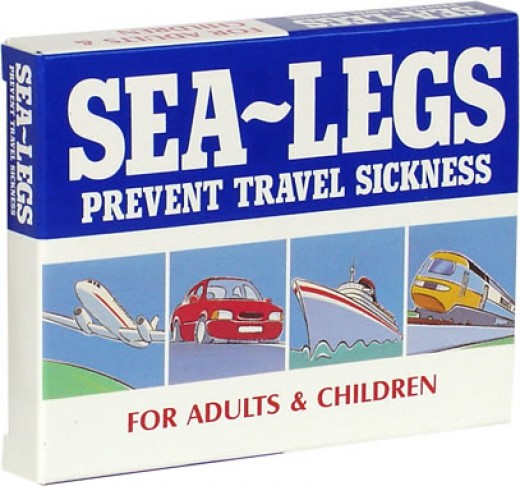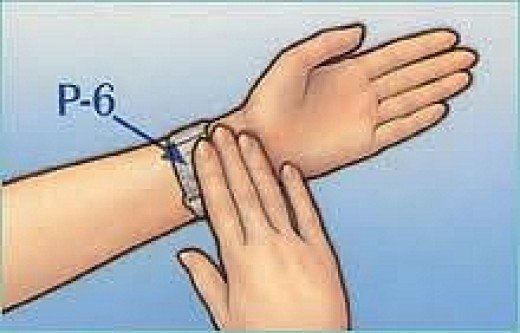Q&A: Seasickness & Motion Sickness: Causes, Vulnerability, Prevention and Treatment
Why do some people become seasick even in apparently in calm seas? While are some people much more susceptible to car sickness, air sickness and other forms of motion sickness than others? The answers may suggest ways to prevent and lessen the impact of seasickness and motion sickness.
Why are only some people susceptible to seasickness and motion sickness?
The expression term “motion sickness” is misleading: Motion is not required and it can be induced by virtual reality, videos and glasses simulation. It is not a sickness implying that it is a type of disease. Although the symptoms and physiological responses such as nausea are similar to a disease.
Various studies have shown a number of patterns and linkages:
- Age is an important determinant with very young children being the most susceptible . The vulnerability to motion sickness first appears at an age of 6. It reaches a maximum rate at around 10 years of age and many people become less susceptible by the age of 20.
- Women are almost twice as likely to develop motion sickness as men
- People that suffer from migraine are especially susceptible.
- Sleep deprivation can trigger motion sickness.
There is evidence that seasickness is an enduring trait, that afflicts some people more than others. Those that are affected remain susceptible all their lives, and there is no age-related abatement.
What causes Seasickness and Motion Sickness?
The most widely accepted reason for motion sickness is the response of the brain to conflicting data the body is getting about orientation and movement. The response is linked to how we sense our orientation and thus maintain our balance.
- Our eyes provide information from what we are looking at - such as the horizon or objects around us. The brain also get signals from motion and balance detectors in our arms and legs and most importantly from our inner ears, which are the major balance organ.
- When we are travelling we often lose our ability to see our surroundings or distant view which shows how our bodies is being moved in the plane, boat or car. Inside the car or boat all we can see is the inside of the car or cabin. The signal the brain receives from our eyes is that we are still. However our motion sensors and inner ears are picking up the signals that the plane or car is rocking back and forth. It is this confusion in the position and motion sensors makes us feel sick.
The result is terrible seasickness.
What Type of Activity can Trigger Seasickness of Motion Sickness?
Examples of activities, environments and devices that can cause symptoms of motion sickness are:
Boats
Camel rides
Ships
Elephant rides
Submarines
Hydrofoils
Simulators
Hovercraft
Swimming
Fairground devices
Fixed-wing aircraft
Cinerama
Helicopters
Inverting, 3D or distorting glasses
Spacecraft
Microfiche readers
Cars
Rotation about a vertical axis
Coaches
Coriolis stimulation
Buses
Low frequency oscillations
Loud music
Trains
Buses
What are the Symptoms of Seasickness and Motion Sickness?
Stomach discomfort, is usually the first symptom. This is followed by nausea of increasing intensity and feeling unwell. Paleness of the face occurs due to constrictions of the blood vessel and some people develop a greenish tinge to their face. Sweating also occurs even in cool temperatures. Other symptoms are increased salivation, light-headedness, yawning, bodily warmth, irregularities in breathing, drowsiness, headaches and disorientation. The final outcome is bouts of vomiting.
What are the Best Prevention Strategies?
There are various types of Prevention strategies: pharmacological intervention; behavioral measures; biofeedback or autogenic training, adaptation and avoidance.
Some of the best prevention tips are:
-
If you are fit, young, relaxed, not tired and healthy, you will have less chances of experiencing seasickness.
- Diet - only eat foods that are considered safe foods for about 24 hours before boarding (avoid spicy, fatty and acidic foods). Don't eat or drink too much alcohol). Eat a light meal before you board, rather than have a completely empty stomach. Ginger is often very effective ad can be taken in drinks and various foods!
- The motion sickness patch - placed behind your ear about 4 hours before boarding are very popular these days and can be changed regularly. scopolamine, the active ingredient is absorbed through the skin and has few side-effects.
- Acupressure bracelets - a band is worn, one on each wrist, before and during trip. Some contain small magnets. The bands have a small stud, which should be positioned over a key pressure point (P6) on your wrist to trigger an Acupressure response.
- The motion sickness Relief Band is worn on the wrist. The band is said to work by emitting low-level electrical pulses that calm the stomach.
- Motion Eaze natural oil - is applied behind the ear and is absorbed through the skin.
What are the Best Non-Drug Remedies?
- To reduce the feeling of the nausea, try to correct the signals by sitting on deck or near a window and looking at distant objects outside of the ship/car/train. Changing where you sit so that you can see the horizon also helps many people. Don't read or watch television if you are feeling sick as it will make you feel worse.
- Regular, controlled breathing appears to help many people
- Use a fan or listen to some music - distraction often helps.
- Eating small portions of salty snacks at regular intervals often helps to calm your stomach.
- Relax if you can - lying down and closing your eyes might help.
- Ginger is a wonderful natural remedy for seasickness and nausea. You can drink tea of ginger beer, or eat fresh ginger,or suck on a ginger sweet.
- Bitters, mint, apricot juice, carrot juice, citrus, pumpkin or squash seeds, peppermint tea and parsley are also claimed to offer relief.
- Don't Drink large servings of water. Small sips at widely-spaced intervals are better.
- Don't Face backwards and sit in the centre of the ship where the rocking motion is less.
What are the Best Drug Remedies?
Medications like dimenhydrinate, scopolamine, meclizine (less-drowsy Bonine, Dramamine, Antivert). Popular antihistamines such as Benadryl are also successful in offering relief for some people. A variety of Homeopathic medicines are also available such as - Trip Ease, Sea Sik Oral Spray and On The Move capsules.
Why does the susceptibility to seasickness wane after a few days?
For most people the seasickness wanes after 2 or 3 days as your body an sensors get used to the moving environmental conditions or activity. The reason for this adaptation are unknown.





